Last Updated:July 14, 2025
How is a Sunroom Different from a Regular Room?
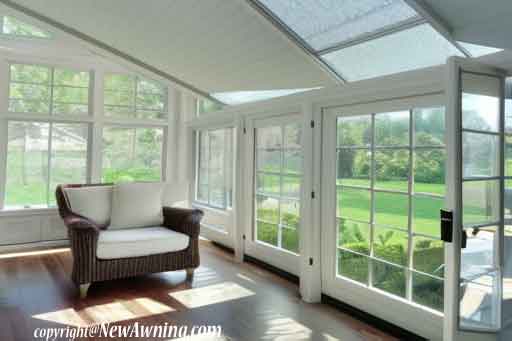
If you’re considering adding a sunroom to your home, you might be wondering what sets it apart from a regular room. In this blog post, we’ll take a deep dive into the differences between a sunroom and a regular room to help you understand which one might be right for your home. If you’d like a super quick answer, I’ve included that first.
A sunroom is different from a regular room in several ways. One key difference between the two is the amount of natural light that each type of room receives. Sunrooms are designed specifically to allow as much natural light as possible to enter the space, while traditional rooms may have smaller windows or no windows at all. Sunrooms also tend to be more energy-efficient due to the use of energy-efficient windows and insulation. They also may not have these features. Aesthetically, sunrooms have a more open and airy feel due to their large windows and glass walls, while regular ones may have a more enclosed feel with solid walls.
Let’s define what a sunroom is. A sunroom is a type of room that is typically built onto the side of a house and has large windows or glass walls. The primary purpose of a sunroom is to allow natural light to enter the room and provide a space to enjoy the outdoors while still being indoors. Sunrooms can be used for a variety of purposes, including a nursery, gaming room, family room, holiday room for entertaining guests, or even just a quiet place where you can work from home. If you’re looking for more information, we’ve published a complete guide to sunrooms.
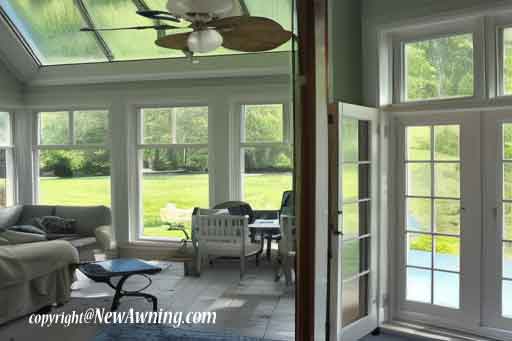
Now that we’ve defined a sunroom, let’s compare it to a regular room. An obvious difference between a sunroom and a regular room is the amount of natural light that each one receives. Sunrooms are designed specifically to allow as much natural light as possible to enter the space, which can be beneficial for both your physical and mental health. Natural light can help to improve your mood and increase your productivity, and it can also help to reduce the amount of electricity needed to light the room.
Comparison of energy efficiency in sunrooms and regular rooms
Energy efficiency is an important consideration when deciding whether to add a sunroom or a regular room to your home. In this section, we’ll take a closer look at the differences in energy efficiency between the two options.One key factor that contributes to the energy efficiency of a room is the type of windows and insulation used. Sunrooms are often built with energy-efficient windows and insulation, which can help to reduce your heating and cooling costs. This is especially important if you live in a climate with extreme temperatures, as a traditional sunroom can be a more comfortable place to spend time in both the summer and winter months.
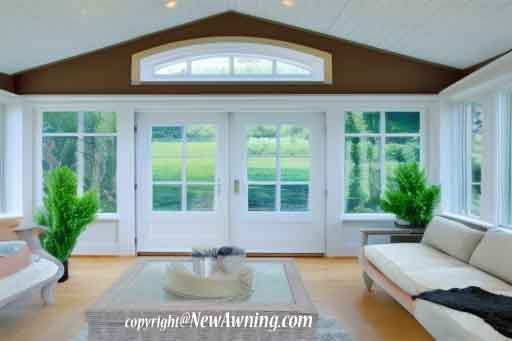
On the other hand, rooms in your home may not have the same level of energy-efficient features. If you’re considering adding a regular room to your home, you may need to invest in energy-efficient windows and insulation to ensure that the room is as energy-efficient as possible. While this can be an additional cost, it can also help to save you money on your energy bills.
Another factor to consider is the amount of natural light that each type of room receives. Sunrooms are designed specifically to allow as much natural light as possible to enter the space, which can help to reduce the amount of electricity needed to light the room. This can also help to improve your mood and increase your productivity. As an alternative, the non-sunroom may not receive as much natural light, which can result in a need for more artificial lighting and higher energy costs.
In addition to the energy-efficient features and natural light, the size of the room can also impact its energy efficiency. Sunrooms are often smaller which means that they may require less energy to heat and cool. This can help to save you money on your energy bills, especially if you’re using the sunroom as a year-round living space.
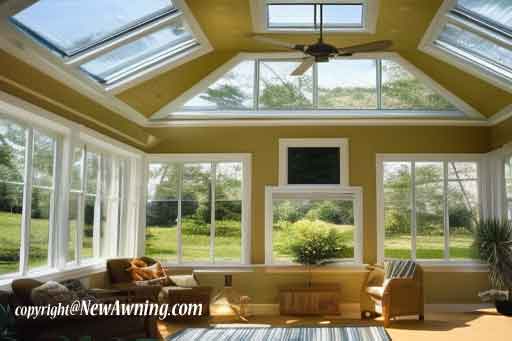
Overall, sunrooms tend to be more energy-efficient due to their energy-efficient features, natural light, and smaller size. However, it’s important to note that there are ways to improve the energy efficiency of a regular room, such as by installing energy-efficient windows and insulation. Ultimately, the choice between a sunroom and a regular room will depend on your specific needs and budget, as well as the style of your home.
The flexibility of design and purpose in regular rooms
When it comes to choosing between a sunroom and a regular room for your home, one key factor to consider is the flexibility of design and purpose. We’ll take a closer look at the differences in flexibility.One of the main advantages of regular rooms is the flexibility they offer in terms of design and purpose. Because they are not built with large windows or glass walls, you have more freedom to choose the layout and design of the room. This can be especially useful if you have a specific purpose in mind for the room, such as a home office or a playroom for children.
Another advantage is that they can be used as a year-round living space, unlike sunrooms which may not be suitable for all climates. This means that you can use a regular room for any purpose you choose, regardless of the time of year.
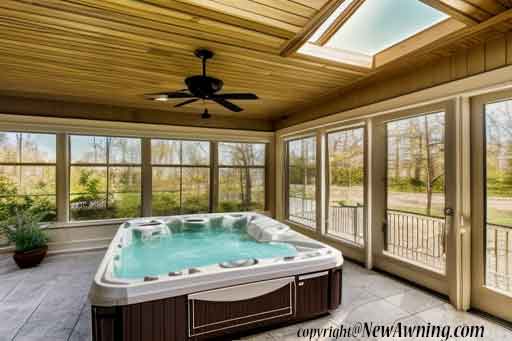
However, it’s important to note that they may not offer the same level of natural light and energy efficiency as sunrooms. While you can add energy-efficient windows and insulation to a regular room to improve its energy efficiency, it may not be as energy-efficient as a sunroom. Additionally, they may not provide the same sense of openness and spaciousness that you get from a sunroom due to their solid walls.
Overall, regular rooms offer more flexibility in terms of design and purpose, but they may not be as energy-efficient or provide the same sense of openness as sunrooms. The choice between a sunroom and a regular room will depend on your specific needs and preferences, as well as the style of your home.
In addition to the differences in lighting and energy efficiency, there are also aesthetic differences between a sunroom and a regular room. Sunrooms often have a more open and airy feel, thanks to their large windows and glass walls. This can create a sense of openness and spaciousness that you might not get in a traditional room with solid walls. Additionally, the natural light that enters a sunroom can create a warm and welcoming atmosphere that is hard to replicate with artificial light.
Comparison of natural light in sunrooms and regular rooms
Natural light is an important factor to consider when deciding whether to add a sunroom or a regular room to your home. I’ll share my thoughts on the differences in natural lightOne of the main advantages of sunrooms is the amount of natural light they receive. Sunrooms are designed specifically to allow as much natural light as possible to enter the space, which can be beneficial for both your physical and mental health. Natural light can help to improve your mood and increase your productivity, and it can also help to reduce the amount of electricity needed to light the room.
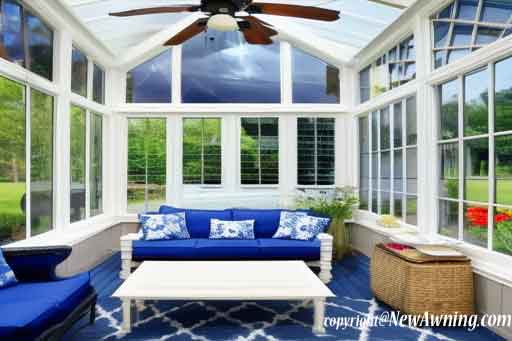
On the other hand, standard home rooms may not receive as much natural light due to their smaller windows or lack of windows altogether. While you can add windows to a regular room to increase the amount of natural light, it may not be as efficient or effective as the large windows and glass walls of a sunroom.
Another factor to consider when comparing the natural light is the location of the room in relation to the sun. Sunrooms are typically built onto the side of a house and have windows or glass walls that face the sun. This can help to maximize the amount of natural light that enters the room, and they may not have the same orientation or location, which can impact the amount of natural light they receive.
Overall, sunrooms tend to receive more natural light due to their large windows and glass walls, as well as their location and orientation. However, it’s important to note that there are ways to increase the amount of natural light in a regular room, such as by adding windows or skylights. The choice between a sunroom and a regular room will depend on your specific needs and preferences, as well as the style of your home.
There are also practical differences between a sunroom and a regular room that you should consider when deciding which one is right for your home. For example, sunrooms can be more expensive to build or add to a home. This is due to the cost of the materials and labor needed to construct the walls and windows of a sunroom. Additionally, sunrooms may require more maintenance, as the windows and glass walls will need to be cleaned and maintained to ensure that they are in good working order.
Despite these differences, both types of rooms can serve similar purposes in a home. Both types of rooms can be used for hanging out alone or hosting a gathering of your friends, and family. The key is to consider your needs, budget, and the style of your home when deciding whether a sunroom or a regular room is right for you.
In conclusion, each room has unique characteristics that set them apart. Sunrooms offer a space that is flooded with natural light and can be more energy-efficient, but they can also be more expensive to build and maintain. Regular rooms offer more flexibility in terms of design and purpose, but they may not provide the same level of natural light and energy efficiency as a sunroom. Ultimately, the choice between a sunroom and a regular room will depend on your specific needs and preferences.
